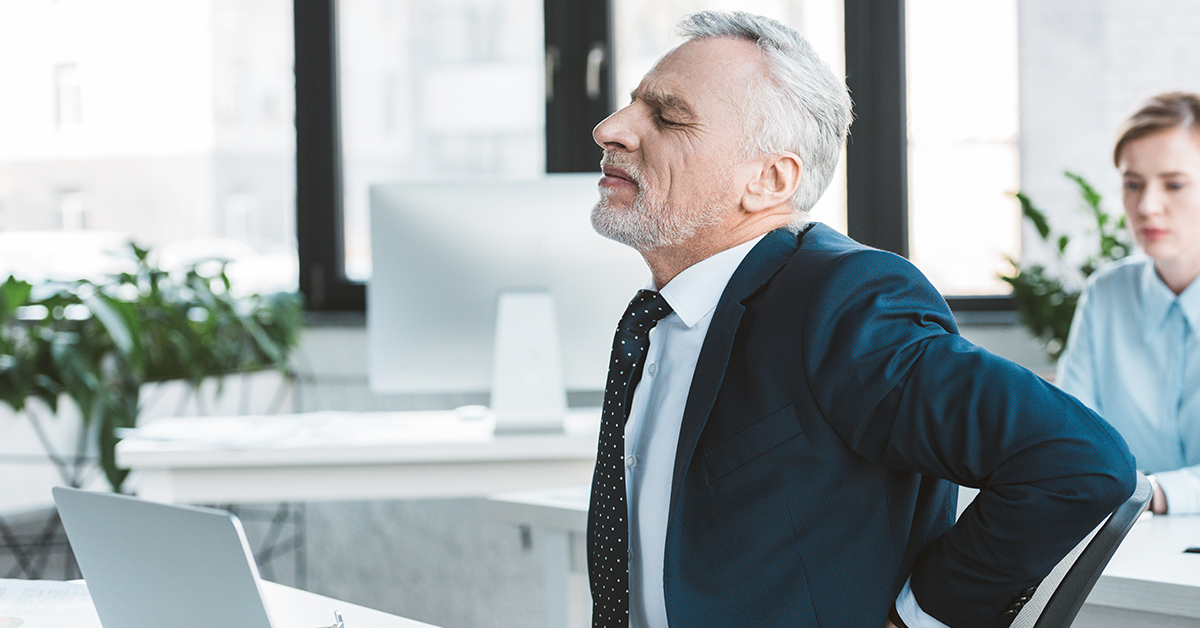
Probably everyone has said something like this to themselves: "I have to admit it, my old back is just more prone to getting sore than when I was a kid. Stiff and sore - that's normal." OR IS IT?
What Kind of Pain Is Normal as You Age?
We all experience normal aches and pains as we enter adulthood and advance toward middle age, but how can we recognize a serious condition before it progresses? In this article we explore neck and back pain at different stages of life, discuss how concerned we ought to be about pain that persists, and what we should do about pain.
First, a note of caution: If there's a history of cancer in yourself or in your family, what might seem like normal aches and pains could indicate something more serious. Be sure to consult a doctor if back pain persists for a longer than a week or two.
Dealing with aches and pains as you age
- Kindergarten and grade school-age children seem to think they're indestructible. In truth, they don't get hurt as easily, and they do heal faster than adults do. However, they also may not be able to express that something feels abnormally painful. Watch for signs that a child is :"favoring" to avoid painful movement, and look for evidence of pain - changes in appetite, or signs of stress in their expression. Never give adult-strength pain relievers to children, and don't be shy about checking with a medical professional.
- "Growing pains" are not uncommon for kids 16 and under. Kids and teenagers under 16 should be given age-appropriate child-dose medication, such as ibuprofen or acetaminophen, to lessen pain. Your child's persistent pain should be investigated.
- If they're active in sports, middle school through high school students might have a team trainer for advice. It's recommended you chat with the trainer or coach, to make sure they watch out for sports-related back and neck problems, and that they will take action (including a heads-up for yourself!)
- The 20s are prime years for the physically active. Still, beware of repetitive strain injury (RSI) and lower back pain. Both of these are more likely when bodies that sit at work all week are suddenly active on weekends. Extreme sports on a whim could send you into the pain zone, or even cause debilitating back injury. If you develop the good habit of warming up before strenuous exercise at this age, you might avoid hurting yourself as you get older.
- 40s to 50s: don't overdo it in sports if you are in this age group. Use your legs, not your back when lifting. If a new mattress doesn't relieve morning back pain, check in with your doctor. Avoid relying on over-the-counter pain relievers; they can mask a serious condition, and overuse can cause severe and potentially deadly gastrointestinal problems.
- 60s and beyond: Osteoarthritis can show up as early as your 40s but it's the most common form of arthritis in this age group. Stiff and swollen, damaged joints make everyday movement more painful. Healthy weight and good exercise habits are the best present your 20-ish self can give your 60-ish self!
- To reduce back and joint pain in the 70s and beyond, stay physically active and watch your weight. Gentle stretching, or even yoga, will help improve flexibility and muscle tone. See your doctor to make sure you are healthy to exercise, then work up to the highest level of activity that feels right. Motto for the aging active person: Use it or lose it!
- Weight control is important for all age groups. Excess weight puts unnecessary stress on your joints, neck and back, makes injury more likely and interferes with recovery. Maintain a healthy weight consistent with your body mass index. (BMI calculators are available online, and your doctor can help you set and reach weight management goals).


